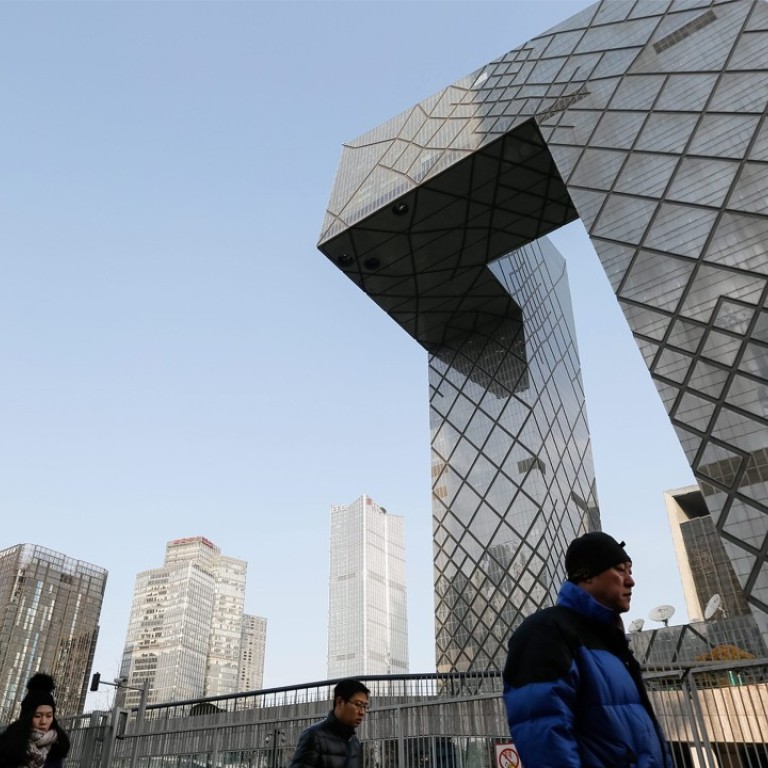
End the skyscraper craze and build China’s cities around its public space
Architect Peter Schubert says China’s decision to move away from showpiece tower blocks creates an opening for the reinvention of the public square. A space that pairs commercial activity with cultural exchanges would find favour with its rising middle class
As China outpaces the rest of the world in the volume, scale and speed of architectural development, the country has an opportunity to build a lasting civic and cultural legacy.
Today, China’s cities are unprecedented in their rapid growth. Skyscraper construction is booming in many major metropolitan areas, and vast infrastructural projects and malls sprawl through neighbourhoods.
The high-rises that dominate the skyline are typically standalone buildings. They are meant to be admired from a distance as urban landmarks, representing the country’s transformation into a modern nation and global power.
For better or worse, America’s skyscraper expertise and its singular contribution of the skyscraper as an urban icon was a leading factor in the past 20 years of urban development. Sadly, the Western notion of a civic piazza or square as a community gathering space has not been one of our contributions.
In contrast, during America’s own skyscraper boom 80 years ago, New York’s Rockefeller Center created a new paradigm for tall buildings. At that time, skyscrapers were single-purpose commercial towers competing to be taller and more audacious than the one that came before.
Rockefeller Center broke away from this model and included a mixed-use destination with shops, restaurants, public spaces and cultural venues. In other words, the developers made it a priority to programme and shape an urban space that was as significant as the buildings that surrounded it.

Although the Rockefeller Center is a 20th-century development, its central, civic space echoes ages-old principles of classical urbanism. Long before skyscrapers existed, American and European cities were built around vibrant public spaces like open squares, piazzas and parks; good examples are Piazza San Marco in Venice and Place des Vosges in Paris.
These animated open spaces, or “voids”, were at the centre of dense urban areas, and were used as stages for a variety of civic and public events. In much the same way as skyscrapers mark significant points in contemporary cities, voids generate the most identifiable memories of certain places and milieus.

The high-rises that dominate the skyline are typically standalone buildings
This sea change – articulated at the very top levels of Chinese government – opens the way for more creative approaches to city building.
China’s building boom has, in the past two decades, generated tall, iconic, and/or eccentric buildings that contribute little to the public realm. In reaction to that phenomenon, Chinese developers are now starting to prioritise the “first generation” of purpose-built public spaces.
Just as Rockefeller Center did 80 years ago, this approach will animate China’s growing cities by pairing commercial activity with sites for integrated, cultural exchanges that include the arts, education, recreation, transport and, of course, retail.
The process is rather clear-cut: it’s time for China to infuse more of its mega developments with focused civic agendas in ways that match its productivity, as well as its power and potential for growth.

Civic space is the literal common ground essential to the identity and livability of cities, where the urban experience is as important as the architecture. It’s time to go beyond single buildings and develop more urban districts and identifiable civic spaces as the foundation for public exchange.
It is incumbent upon us as architects, along with educators and governments, to implement a new approach to urbanism that is attuned to Chinese citizens and their needs. By creating public spaces that encourage a variety of cultural activities and social events, China can take a proactive step towards supporting and nurturing its rising middle class.
In contrast, the dominant quantity-driven, fast-paced, commercial-only building programme could leave urban centres with meaningless shells of civic infrastructure. Shaping a strong public realm that honours the past and encourages social, cultural and economic stability is necessary to sustain China’s cities and its citizens.
As the most populous country in the world, China has the opportunity to create a concept of public space that emulates and improves upon global best practices for civic urbanism in the 21st century.
Peter Schubert is a partner at Ennead Architects
